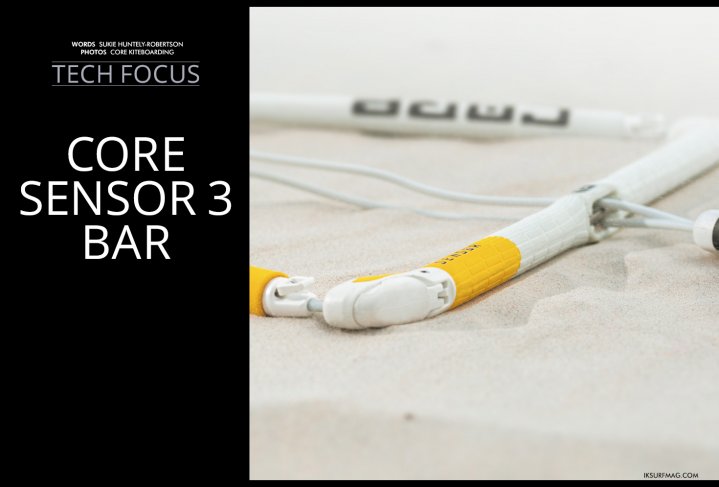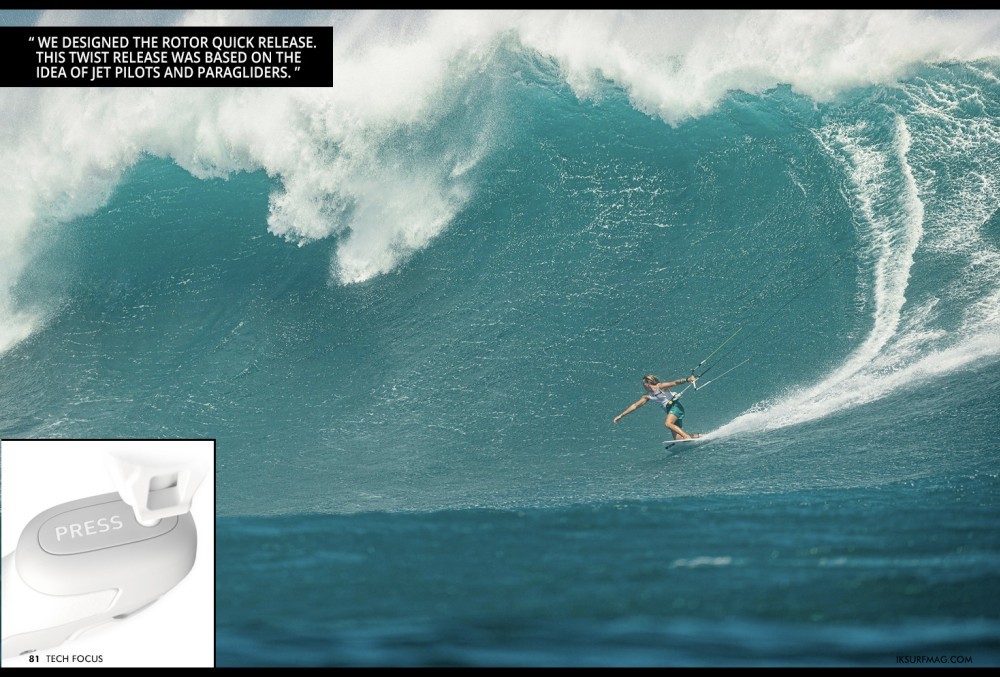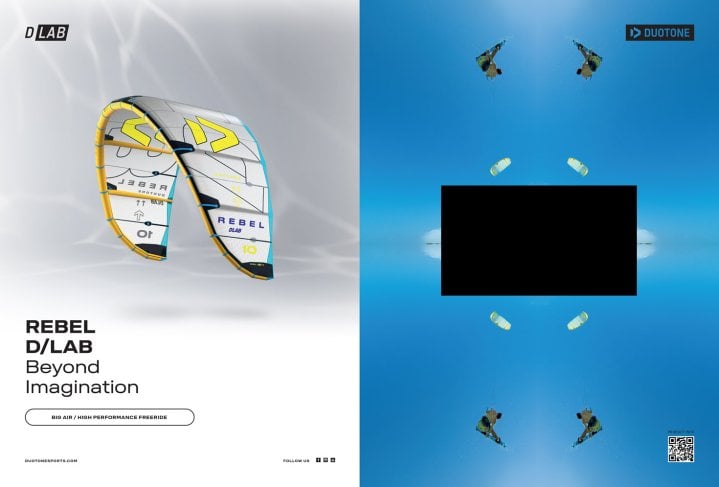
Tech Focus - Core Kiteboarding
Issue 81 / Fri 12th Jun, 2020
Core have just launched the Sensor 3 bar, and it’s a sublime bit of kit, Sukie Huntley Robertson speaks to Philip Schinnagel and Rick Jensen about the creation of a masterpiece and how simplicity ran to the very core of the product. Click here to check it out!
No stranger to innovation, German powerhouse CORE proudly unveiled the new Sensor 3 Bar series at their annual dealer meeting in early March this year. Almost 3 years in the making, the range incorporates 4 options to cover the different kites and styles on offer.
We caught up with COREs newly appointed CEO Philip Schinnagel to chat through the highly anticipated Sensor 3 Bar, and also managed to grab hold of new designer Rick Jensen to chat through his thoughts and inspirations behind the project.
Phillip Schinnagel: “The Bar is the interface between you and the kite so it's really really important. From my perspective, it's perhaps more important than the kite itself. It can give you the feedback you need for an incredible session, and it also helps you to control the kite easier. Once again we have tried to avoid those bulky bar ends and all that heavy stuff. The goal was to have the lightest and most direct bar on the market, we launched our campaign arounf these three core words: feel, control, connect. These are the pillars we focused on throughout the development, and with the finished product this is what we have achieved.”
Rick has come on as your designer, and was it his idea to to revamp the bar. Is it something which has been in the pipeline for ages?
PS “We have had it on the list for a few years actually, then Rick joined us two and a half years ago. He created and designed the new Sensor 3 bar himself. Rick is an International Wake Style champion and a good wakeboarder too, he always had in mind to create something more like a wake handle, a bar that won’t hurt your hands, something a little different to what is already out there. The result is we have those soft bar ends and this rubber feeling grip, but the bar is still really light weight and not at all bulky. This was the main idea with it. Then Rick he started to think, we have a very clean device in your hands while riding but what about when you pack down? So he made the Stealth Winders, and people ask, how should I wrap my lines around it?! It should be clear! It is, but it’s hidden, just open them up and you have the normal winder.”
Rick Jensen: “Well, the whole development from the first sketch to the final product took over 2 years, but the raw version of a slick designed bar grew slowly from the experience of kite and wakeboarding for around 20 years in my head before working for CORE.
It seems like a long process to design and develop a bar, are there many others involved?
PS “We wanted to have a new one last year actually but we said no; let's take one more year to develop it. So this is just a classic case for being ready in time. For us it is really important to only release a product when we feel it is ready. I actually took a look at our old bar yesterday and said, oh man, that looks like something from the 1990s! How could we have ever done something like this!
RJ “For realising those ideas I am lucky to work with such a brilliant team. Frank Ilfrich our kite designer has been working for CORE since pretty much the beginning and has a very precise eye on things. Jan Kieksee who mainly works on the graphic design is a genius, giving both impulses and puzzling ideas together. Then brainstorming and testing with Sebastien Witzleben (AKA Buzzy!) I have someone on my side with even more motivation than me, spending every possible minute on the water and thinking outside the box. I would say our R&D bubble is filled with professionals and passion for taking on new spheres. Bringing all of this into existence is of course another issue, however with ability to use modern CAD software and 3D printers for manufacturing prototypes it all came together. But the seeds for this whole project were simply a lot of sketches.”
You have developed a few unique ideas with this bar such as the Stealth Winders, was it a case of starting from the ground up or using what you had already with the Sensor 2?
PS “It's often overlooked I think the grip, so now we have the Grip Lock. It feels softer and the new profile adds more grip and more comfort. But it's basically the same diameter we used to use: we kept all these good working CORE standards that we had in our bars. For example there is a titanium insert in the center of the bar to make it more stiff, plus the carbon fiber reinforced bar blank itself for the Pro Bar.”
RJ: “The DNA of the CORE Sensor control system should be kept. Analyzing the strengths and weaknesses it was clear what risks could be avoided and what opportunities there were to bring the product to the next level. For example we still use the Titanium core and Tactanium lines. But those hard sharp end caps were something which seriously had to go, and of course there are more options for the QR release which we explored.
Traditionally of course CORE have always used, and are sometimes known for, the Rotor QR twist release mechanism. Why now the change to a push away option?
PS “The original revolution started in 2011 for us, beforehand we had a pushout system. So It's nothing new to us. Back then we designed the Rotor Quick Release. This twist release was based on the idea of jet pilots and paragliders. They all have something to twist because in an emergency situation you don't want to have extra pressure on this thing that you need to move away from you. The only solution to bring down this extra force is the twist.
And for us kiters, we have this load from the kite plus the extra load from sand or water pushing it down so it is even harder to push away. That was the main idea that worked very well. Back then we were not able to to engineer something like we have today with the protected case of the QR offering such low forces to open. Even with the maximum load of 240 kg on its surface the new release is so simple to open. And over the years we have been able to develop it to what it is now. As you may know, we have been working with the other GKA members to make the sport safer. We now have the safety having visible red parts and very low forces to release your kite no matter if it's being pushed out or twisted. The status of this is now industry standard and that is so cool. So we open ourselves up to it and said how can we adapt ourselves to make the sport even safer for our CORE customers, and also kitesurfers all around the world.”
Simplicity is something you are clearly focussing on, is there a reason behind that?
PS “Sadly for most of our customers they actually go kiting for two weeks or four weeks a year and that is it. So you have to make sure the equipment they have is working and you don’t have to do another course before you go back on the water! We added those basic safety features like the visual safety on the back side, you have this red stripe now to avoid grabbing it the wrong way which is simple but can really be effective in the split second moment.”
Once you have finished the design and are happy and have released it, do you have a break or is it straight into the new design?
PS “Its started already! Maybe some more features that we wanted to add that were not ready. And so it's always an ongoing process. You cannot relax! If you ask the designers they say it is not ready yet! But at a certain stage we say now it is time for something new.”
Can you let us in on what you are now working on with a new bar?
RJ: “For this you would need to be able to see inside my head!”
Videos
By Sukie Robertson

















